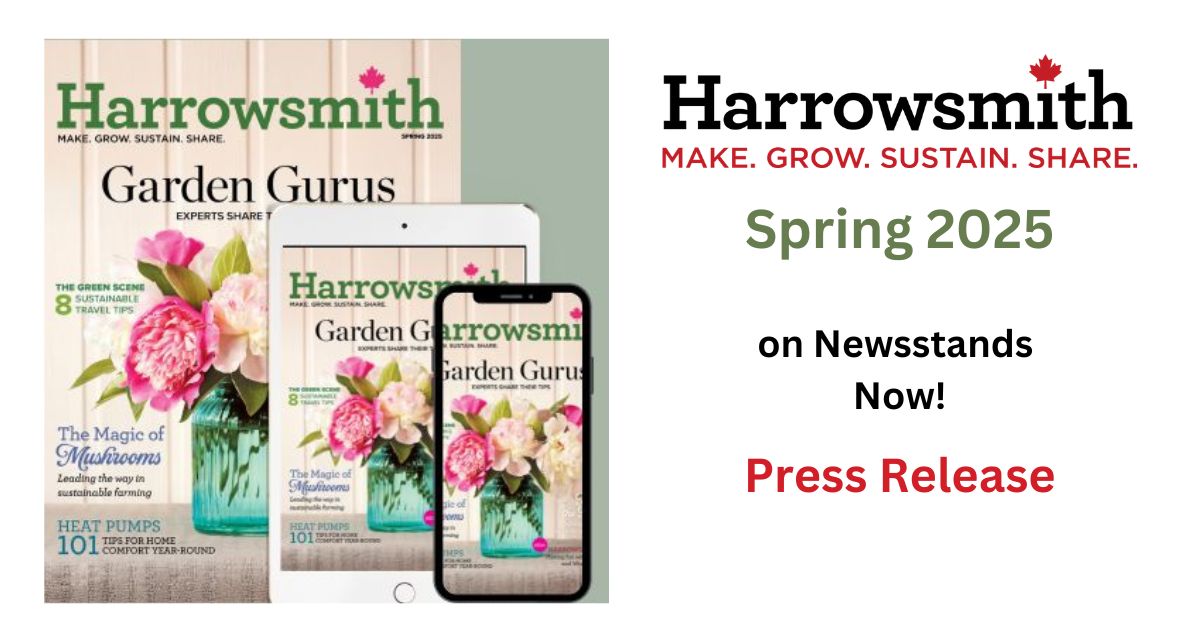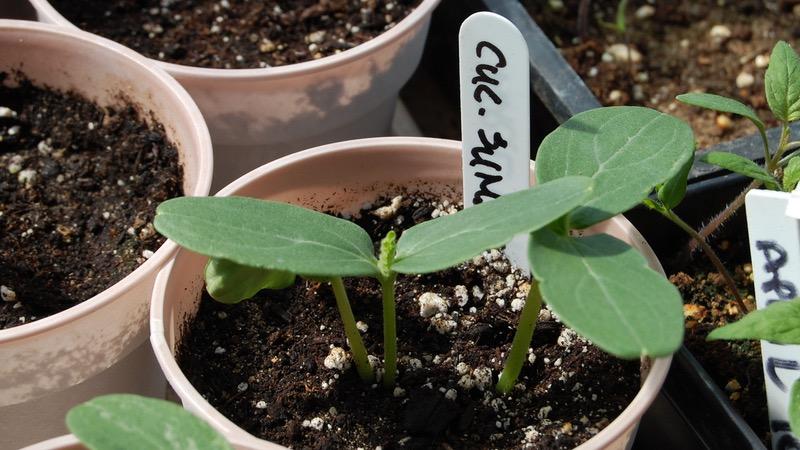Kids are great for bringing our attention to the magic of gardening. For Mark, watching a grandkid eat their first carrot out of the ground never loses its excitement. The crunchiness, the sweetness and, above all, the fact that it came out of the ground is a miracle that should never be lost on grown-ups.
The list of miraculous root vegetables is long. They’re a diverse group that store well, grow well in colder months, and are generally high in starches and sugars. Of course, they grow in the ground, creating this mystery about what is going on down there until the day you pull or dig them.
True root vegetables are those that grow taproots or tuberous roots. Some common taproot vegetables are carrots, parsnips, beets and radishes, and the more obscure tuberous root vegetables include pignuts and sweet potato. But not potatoes. Potatoes are tubers, a minor distinction from their sweeter root relatives; other tubers include Jerusalem artichoke and yams.
Rhizomes are another group of earthbound edibles and include spices such as turmeric, ginseng and ginger. The obscure and exotic corms — such as taro, enset, and eddoe (Japanese potato) — are yet another group.
Soil Conditions
Rule No. 1: To grow a vegetable that grows in the ground, you need good ground. Root vegetables require well-drained soil that is relatively loose and sandy. This produces a deep, straight root and easy access for harvest. If you have heavy clay, consider building a raised bed and backfilling with a lighter topsoil or triple mix.
Although planting or sowing varies widely within the diversity of “root vegetables,” all soils should be heavily amended with organic matter such as compost or rotted manure, which will add both valuable nutrients and drainage. If you are growing carrots, for example, it is best to apply this compost or manure in the fall before the spring when you intend to plant; carrots grown in underdeveloped compost can become rough and overly branched.
Potatoes and other tubers are fun — you can buy a seed potato, or gamble on the potatoes you might have sprouting under your sink. We prefer seed potatoes.

Despite technically being a different plant from the regular potato, sweet potatoes are grown the same way, but rather than calling them “seed sweet potatoes,” they are referred to as “slips.”
To plant a potato in the early spring, find an eye, which is where the sprout will grow from if it has not already started sprouting. Cut the potato into chunks, each with two or three eyes, and drop them into a shallow trench 30 cm (12 inches) apart and cover with 8 cm (3 inches) of soil. When the green shoots get to be 25 to 30 cm (10 to 12 inches) long, cover them halfway with soil and continue the process as they grow throughout the season.
Carrots are sown by seed directly into the soil, like other “true” root vegetables such as parsnips and radishes. Direct-seeding into a well-prepared seedbed is the best way to propagate this group, as these types of root vegetables have tiny seeds that are difficult to distribute evenly. But worry not — you will be able to thin them out later.

We rake the soil smooth, sprinkle a thin layer of sand, then sprinkle the seeds into the sand, and brush the sand and seeds together with our fingers across the surface of the soil before watering. After about 3 weeks, your carrots will have germinated, at which point you will want to thin them out to about one plant per square inch. Return in a month for a second thinning, which will allow your carrots 1 1/2 to 2 inches of space to mature. We encourage you to sow carrots in the early spring, about a month before the last frost and again in the midsummer, as your second crop will mature under cooler fall weather, which will help fortify the sugars in the root, making a sweeter carrot.
Turmeric and ginger rhizomes are best started in containers, as they require 7 to 10 months to grow. Start them indoors, around March, in a container with high-quality potting soil mixed with compost. As with potatoes, much of the ginger and turmeric you find at the grocery store will have been treated with a sprouting inhibitor, so try to find a direct importer like a Caribbean or African grocer, or consider ordering “seed rhizomes” online. Cut the rhizomes into 5 cm (2 inch) sections and allow them to “cure” at room temperature for a couple of days before planting them under 2 to 3 inches of potting mix. Place the container on a seed-starting heat mat and make sure it receives at least 16 hours of light per day, either sunshine or artificial. After the last frost, move them outside and leave in the container if it is large enough, or transplant them into a well-drained soil. Morning sun with afternoon shade is best.

Water
There is a reason why we often talk about well-draining soil. Root vegetables are particularly sensitive to moisture, and they are susceptible to rot if they are left in water-logged soils for too long. To determine the need for water, use the “finger test” and push your finger into the soil up to the middle or second knuckle. If the soil is dry to your fingertip, it is time to water deeply. Better to water infrequently yet thoroughly, than often and with a shallow sprinkle. Carrots and other taproot vegetables develop narrower and longer roots when they become dry between watering.

Fertilize
There should be plenty of nutrients in a generous application of compost or finished manure, but the addition of fertilizer can help boost your yield. The goal is to concentrate growth below the surface of the soil, so avoid fertilizers that are high in nitrogen, which encourages green growth above the surface. If you prefer to use synthetic fertilizers, look for a 5-10-10 analysis; if you are more of a natural gardener, kelp meal will do the job nicely.
Harvest
Potatoes go out with drama: The green growth they put on above the surface of the soil will collapse to tell you they are ready for harvest. Carrots are cheerful until the end: You can dig them with green tops basically whenever they have reached a satisfactory size. Turmeric and ginger are like potatoes: They will tell you they are ready for harvest at approximately the 8-month mark by giving up their above-ground growth.

The challenge with digging root crops is that you cannot see what you are going to harvest until you do. We weep for all the potatoes that have been lost to the blade of a shovel blindly slicing through the earth, which is a good reason to use a garden fork and minimize the damage done here. There is some wisdom to growing these crops in containers all season, so you can simply dump them out at harvest time.
Store
Most root vegetables should store right through the winter. Do yourself a favour and do not clean root vegetables until you are ready to cook with them; those scads of dirt will protect them in winter storage, and the abrasion of scrubbing them off will only hasten decay. If you have grown this crop in a container, simply move the container itself into a cool, dark place such as a cellar or garage. There was a time when houses were built with useful features like an actual root cellar, so if you are lucky enough to have one of those downstairs, then you know what it is for. Temperature is key: A study in the journal LWT – Food Science and Technology found that storing potatoes between 6°C (43°F) and 10°C (50°F) quadrupled their shelf life while helping to maintain their levels of vitamin C.
If you are digging root vegetables before storage, make sure you cure them before putting them away. Curing will remove excess moisture from the skin, allowing it to thicken up before the long winter. An ideal place for curing is a breezeway or covered porch, where warm, dry air can move over the vegetables without exposing them to direct sunlight. Do this for several days, then place them in an open bowl or paper bags and into the root cellar or a cool shed. The open bowl or paper bag will allow just enough air circulation, whereas an airtight container will trap any moisture released from the vegetable and begin harbouring mould and bacteria.

Enjoy!
There is no shortage of comfort food recipes to incorporate your bevy of earthbound veggies. Perhaps we find them comforting because they develop underground, wrapped in a blanket of earth. Or perhaps it is that the taste of the garden brings us back to a warmer season in the depths of winter. Whatever the reason, there is a magic to root vegetables that adults and children alike can enjoy.
Mark Cullen is an expert gardener, author, broadcaster and tree advocate
and holds the Order of Canada. His son, Ben, is a fourth-generation
urban gardener and a graduate of the University of Guelph and Dalhousie
University in Halifax. Follow them at markcullen.com, @MarkCullen4
(Twitter) and @markcullengardening (Facebook) and look for their latest book, Escape to Reality.
Follow them at markcullen.com, @MarkCullen4, facebook.com/markcullengardening and biweekly on Global TV’s national morning show, The Morning Show.













